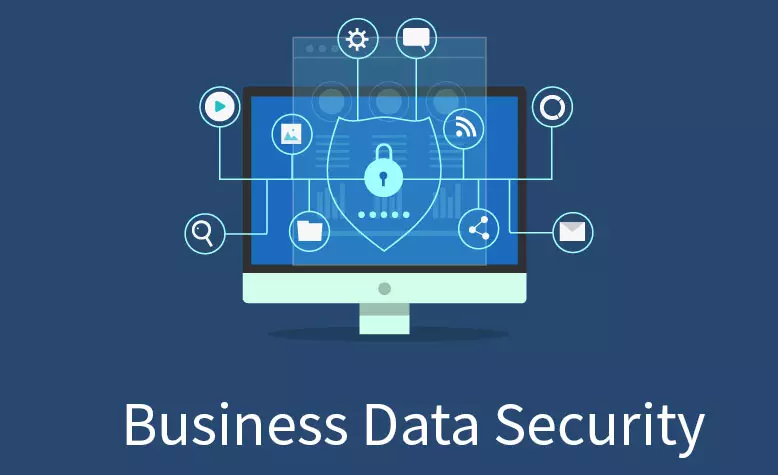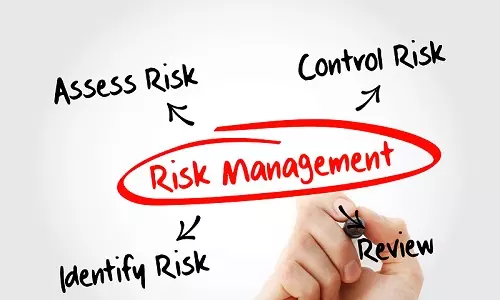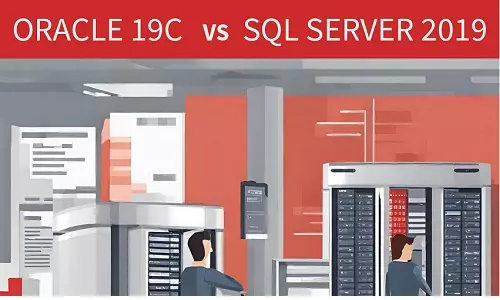5 Key Data Security Risks in Business and How to Mitigate Them

In the world of business today, computer technology forms an important part of operations. This has replaced the traditional piling of paper files as a data storage mechanism. In line with this upgrade, organizations have found it massively challenging to ensure that their data is secure. Every new day, a challenge comes up challenging data storage and sharing within and outside the organization. As such, it has become increasingly important to identify the types of likely challenges and the solutions that can be adopted against them. By identifying the likely risks and threats to company data, appropriate policies and procedures of handling data shall be enacted to ensure improvements. Business continuity shall only be maintained if well-thought policies are developed and implemented with regard to handling and protection of company data all the time.
5 Key Data Security Risks and Cyber Threats in a Business
Company data is a sensitive issue, and it should be handled with a high level of sensitivity. The responsibility of securing company data is a collective responsibility, to be adopted by every member of the organization. Every employee should understand the threats and risks of company data, and how they come about to be. Following is a description of some of the risks and threats that every employee should be aware of as long as they work for the company.
1. Cyberattacks
Cyberattacks represent a pervasive and evolving threat to the security of data in business environments. These malicious activities are orchestrated by individuals or groups with malicious intent, aiming to breach digital systems, networks, and devices to gain unauthorized access to sensitive business information. The motive behind cyberattacks can range from financial gain and industrial espionage to ideological or political reasons.
Hackers can exploit vulnerabilities using different tactics to maliciously gain entry to a business network. These vulnerabilities can exist in weak and outdated security configurations such as device passwords which can be exploited through a brute force attack. Further, hackers can exploit weaknesses in software, operating systems, or applications. Unpatched or outdated software can provide entry points for attacks. Furthermore, hackers can intercept communication between parties through a Man-in-the-Middle (MitM) attack, potentially capturing sensitive data or injecting malicious code.
The most common cyber attacks include hacking by exploiting vulnerabilities in applications and business networks, social engineering, phishing through fraudulent emails, ransomware, distributed denial of services (DDOS) attacks, and malware.
Here are real life cases of such attacks:
a. Distributed Denial of Service (DDOS) Attacks
In February of 2020, Amazon’s AWS was hit by a DDOS attack, the largest as of that date, that launched 2.3 terabits of data per second (Tbps) to their servers. Luckily, AWS was able to mitigate the attack and secure users data. In 2022, Google mitigated what would have been the biggest DDOS attack on their servers, which received a whooping 46 million requests a second.
b. Ransom Attacks
In May of 2023, the City of Dallas, Texas (USA) suffered a ransomware attack that led to the shutdown of some of its IT systems to mitigate the spread. In February 10, 2023, food giant Dole suffered a ransomware attack that saw the company suspend operations in their North America production temporarily. In their statement to the federal and state regulators, Dole stated that the ransomware attack cost them US$10.5 million.
2. Disgruntled and Rogue Employees
Disgruntled and rogue employees present a significant data security risk in the business landscape due to their privileged access and potential for malicious intent. This concern is paramount for any organization. Particularly within the IT department, employees who harbor dissatisfaction towards the company can become potent threats, leveraging their extensive access to data centers, intricate networks, and administrative accounts. This heightened level of access grants them the ability to exploit vulnerabilities, manipulate systems, and extract or tamper with critical data, thereby inflicting severe damage to the organization's operations and reputation.
Further, they might steal proprietary data, expose confidential information, or disrupt operations. Their knowledge of internal procedures and vulnerabilities enables them to bypass security measures, making detection challenging.
3. Human Error
Human error comes into play when employees lack awareness and exhibit carelessness in their approach to data management, thereby subjecting the company's data to unforeseen complications. This could encompass scenarios like leaving accounts unattended in public spaces without logging out, employing weak passwords, accessing unauthorized websites, and inadvertently clicking on suspicious links in phishing emails. Instances of inadvertent errors by employees, including the erroneous transmission of sensitive information to incorrect recipients, can result in serious data breaches.
4. Bring Your Own Device (BYOD)
The BYOD strategy pertains to employees utilizing their personal smartphones or computers to access the protected business and corporate network to carry out their activities. When employees use their personal devices for work-related tasks, it can lead to various vulnerabilities. For instance, an employee can use a personal computer that is not updated with the latest security patches, lacks proper security configurations, and lacks the proper security applications such as antivirus and antimalware. Once that PC is connected to the company network, it creates a vulnerability within the business network. If the PC already has malware, the malware can get into the network, infecting other devices thereby comprising them and other IT assets such as data. Further, if that device is physically stolen, any unencrypted company data contained in the device is at a risk of being compromised.
In 2016, Uber lost control of over 57 million users when hackers gained access to the personal Github accounts of some Uber developers. The Github repositories contained sensitive credentials that gave hackers access to Uber’s servers hosted by Amazon.
5. Third-Party Risks
There is a prevalent concern surrounding providers in regards to inadequate security practices when granted access to a company's network. A third-party service provider with weak IT security introduces a potential vulnerability that can be exploited by malicious actors, exposing the company's valuable data to the risk of compromise.
When third-party service providers are granted access to a company's network, they essentially become an extension of the organization's operations. However, these external entities might not adhere to the same stringent security standards as the business itself. In some cases, their security protocols may be insufficient, outdated, or not in alignment with the business’s data protection requirements. This discrepancy in security practices between the organization and the third-party provider creates a weak link that can be exploited by cybercriminals. Unauthorized access to the company's network through these providers can potentially lead to data breaches, unauthorized data exposure, or even the introduction of malware or malicious software into the organization's systems.
5 Solutions to Data Security Risks and Cyber Threats in a Business
In an era dominated by digital transformation, businesses have become progressively intertwined with technology, rendering them susceptible to the dangers of cyber attacks. The reliance on interconnected systems, cloud computing, Internet of Things (IoT) devices, and data-driven processes have exponentially expanded the attack surface for malicious actors seeking to exploit vulnerabilities.
Now more than ever, the urgency to safeguard sensitive information, critical infrastructures, financial assets, and intellectual property from cyber threats has become more pronounced. Today, businesses are compelled to adopt a multifaceted approach to cybersecurity. This approach encompasses a spectrum of mitigation strategies that aim to bolster the organization's resilience against a diverse array of cyber threats. Below, we discuss the most critical mitigation strategies to ensure a business is cyber secure.
1. Robust Access Control
Establishing a robust access control framework involves the thorough application of stringent measures that restrict system entry exclusively to authorized personnel. By tightly controlling who can access sensitive areas of a system or network, an organization proactively minimizes the risk of unauthorized access by unauthorized individuals, including employees no longer with the company and malicious actors. This strategic approach necessitates the careful configuration of user permissions, authentication methods, and user role definitions to align with the principle of least privilege. Effective monitoring, stringent access controls, and clear protocols for addressing employee grievances are essential to proactively counteracting an inherent risk of disgruntled employees.
For example, an effective access control for a business can contain provisions such as:
a. Every account that is no longer in use shall be terminated, and there shall be monthly workshops on data security and training.
b. Every employee shall be responsible for their own account, with errors arising from their accounts a personal liability on them.
c. A clear protocol and infrastructure shall be put in place to monitor the logs and records as well as activity in all privileged accounts with alerts on suspicious activity set, such that quick response can be incorporated as a mitigation strategy.
In doing so, organizations ensure that employees and stakeholders can only access the resources and information essential to their specific roles and responsibilities. This targeted approach significantly enhances data security, prevents inadvertent exposure of critical information, and contributes to safeguarding the integrity and confidentiality of the organization's digital assets.
2. Employee Training
Business should organize training initiatives aimed at educating employees regarding the most effective cybersecurity practices and fostering a pervasive culture of heightened security awareness within the organization. These ongoing training programs play a pivotal role in equipping employees with the knowledge and skills necessary to recognize and respond to various cyber threats and risks. By staying updated on the latest tactics employed by cybercriminals, employees can better safeguard a business’s sensitive data and digital assets. Moreover, these programs serve as a proactive approach to mitigating potential security breaches arising from human error or lack of awareness.
Through continuous training, employees gain insights into diverse cybersecurity aspects, including identifying phishing attempts, practicing secure password management, understanding social engineering techniques, and grasping the significance of data protection protocols. Further, training employees equips them with the knowledge of how to react once they suspect suspicious activity in their devices or work accounts.
By investing in continuous training programs, organizations position themselves to stay ahead of evolving cyber threats, adapt to emerging security challenges, and fortify their overall cybersecurity posture, thereby protecting their digital assets including data.
For example, an effective employee training policy can contain provisions related to cyber security such as:
a. Every employee shall be required to attend scheduled training programs on data security at least 3 hours every 90 days.
3. Leveraging Security Tools and Strategies
Businesses should deploy cutting-edge technologies to secure the network, network devices, applications, data, and other digital assets. For instance, Intrusion Detection and Prevention Systems (IDPS) are security tools that vigilantly monitor the flow of network traffic, promptly identifying any unusual or potentially malicious actions. This active surveillance involves the real-time analysis of data packets traversing the network, aiming to pinpoint deviations from established patterns that might indicate a cyber intrusion. These systems serve as a sentinel against unauthorized access attempts, malicious software installations, or any form of disruptive behavior that threatens the network's integrity.
Further, companies should adopt additional security strategies such as Multi-Factor Authentication (MFA). MFA adds an extra layer of security by requiring employees and other stakeholders to provide multiple forms of verification before accessing network resources, significantly reducing the risk of unauthorized access. Additionally, access to critical areas such as server rooms, devices, and processes can be authenticated using biometrics, as an additional layer of security. Moreover, other strategies such as Network Segmentation are crucial to maintain the integrity of the business network. Network segmentation involves dividing the network into segments to contain the spread of attacks and minimize the potential impact of breaches.
4. Create a Robust BYOD Policy
The business should establish a well-defined BYOD policy outlining acceptable use, security requirements, and consequences for non-compliance. In the policy, all employees should understand their responsibilities to securing the business’s digital assets. Further, the company can enforce robust security measures on personal devices, including data encryption, remote wipe capabilities, and password requirements including multi factor authentication. Additionally, businesses should mandate that employees keep their devices up to date with the latest operating system and security patches.
5. Third-Party Security Strategies
As earlier stated, third-party providers with access to a company’s network are an extension of the network. Therefore, each business should conduct a thorough assessment of their security practices. before granting access. An evaluation of their security policies, procedures, and compliance with relevant regulations gives great insights into their IT security standards.
Further, before granting access, a business should specify data protection measures, encryption protocols, access controls, and incident response procedures to the third-parties. It can, further, schedule regular security audits of the third-party provider's systems, networks, and processes. Assess their vulnerabilities and identify potential weaknesses. The audits can be supported by implementing continuous monitoring of the third-party provider's activities, especially those related to data handling and security.
In Conclusion ...
Amid the escalating challenges posed by cybercrime, data security has transcended individual domains to become a shared concern. Globally, corporations face the unsettling reality of system breaches, resulting in massive loss of data and credibility. The need to avert such repercussions is crucial, given that the organization's progression within the market hinges on it. In this critical endeavor, a significant determinant of data protection success lies with those intricately connected to the systems daily – the employees. Their inadvertent exposure of the system to malicious actors could precipitate the massive loss of crucial data. Therefore, equipping them through training and cultivating their awareness of their pivotal role in safeguarding company information is important.
Simultaneously, the organization's management shoulders the weighty responsibility of ensuring data security. The formulation and implementation of policies guarding company data squarely rest upon their shoulders. Ultimately, this responsibility morphs into a collective obligation that can solely be met by individuals guided by ethics and a commitment to safeguarding sensitive information. An essential cornerstone in this endeavor should be the assurance that administrators of critical accounts are individuals demonstrating unwavering loyalty and allegiance to the company's interests. Through a collaborative effort that bridges the actions of every stakeholder, from the employees to the management, the organization fortifies its data security, embarking on a path of stability in the face of ever-evolving cyber threats.







